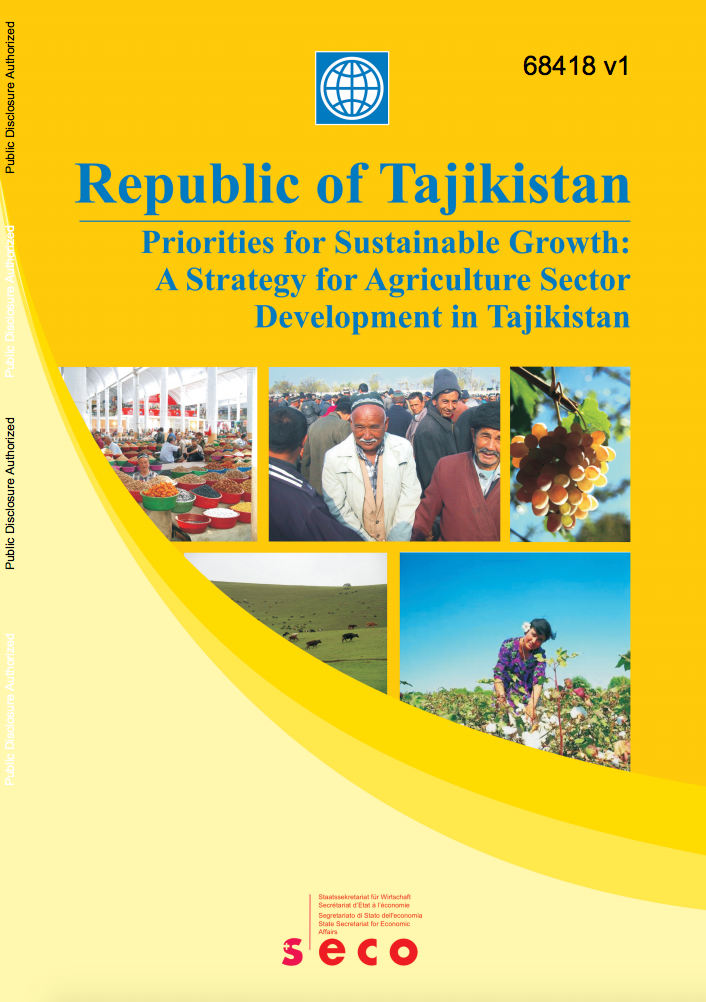The World Bank is a vital source of financial and technical assistance to developing countries around the world. We are not a bank in the ordinary sense but a unique partnership to reduce poverty and support development. The World Bank Group has two ambitious goals: End extreme poverty within a generation and boost shared prosperity.
- To end extreme poverty, the Bank's goal is to decrease the percentage of people living on less than $1.25 a day to no more than 3% by 2030.
- To promote shared prosperity, the goal is to promote income growth of the bottom 40% of the population in each country.
The World Bank Group comprises five institutions managed by their member countries.
The World Bank Group and Land: Working to protect the rights of existing land users and to help secure benefits for smallholder farmers
The World Bank (IBRD and IDA) interacts primarily with governments to increase agricultural productivity, strengthen land tenure policies and improve land governance. More than 90% of the World Bank’s agriculture portfolio focuses on the productivity and access to markets by small holder farmers. Ten percent of our projects focus on the governance of land tenure.
Similarly, investments by the International Finance Corporation (IFC), the World Bank Group’s private sector arm, including those in larger scale enterprises, overwhelmingly support smallholder farmers through improved access to finance, inputs and markets, and as direct suppliers. IFC invests in environmentally and socially sustainable private enterprises in all parts of the value chain (inputs such as irrigation and fertilizers, primary production, processing, transport and storage, traders, and risk management facilities including weather/crop insurance, warehouse financing, etc
For more information, visit the World Bank Group and land and food security (https://www.worldbank.org/en/topic/agriculture/brief/land-and-food-security1
Resources
Displaying 2881 - 2885 of 4907Priorities for Sustainable Growth : A Strategy for Agriculture Sector Development in Tajikistan
Agriculture sector growth has made a
powerful contribution to post-war economic recovery in
Tajikistan, accounting for approximately one third of
overall economic growth from 1998 to 2004. Sector output
increased by 65 percent in real terms during this period,
and has now returned to the level extant at independence in
1990. Total Factor Productivity (TFP) has also increased, by
3 percent per year. Despite this progress, there is
Priorities for Sustainable Growth : A Strategy for Agriculture Sector Development in Tajikistan, Technical Annex 3. Livestock Sector Review
Agriculture sector growth has made a
powerful contribution to post-war economic recovery in
Tajikistan, accounting for approximately one third of
overall economic growth from 1998 to 2004. Sector output
increased by 65 percent in real terms during this period,
and has now returned to the level extant at independence in
1990. Total Factor Productivity (TFP) has also increased, by
3 percent per year. Despite this progress, there is
Kazakhstan : Assessment of Costs and Benefits of the Customs
In 2010, Kazakhstan entered into a
customs union with Belarus and Russia. The first, relatively
easy step in the implementation of the customs union was
accomplished in 2010 with the adoption of a common external
tariff, with varying exceptions in each of the three member
countries. It is the intention of the customs union to
eliminate the exceptions, in phases, by 2015. In fact, the
goals of the customs union are much more ambitious than
Uganda : Country Environmental Analysis
A Country Environmental Analysis (CEA)
is a World Bank analytical tool used to integrate
environmental issues into development assistance strategies,
programs, and projects. To that end, the CEA synthesizes
environmental issues, highlights the environmental and
economic implications of development policies, and evaluates
the country's environmental management capacity. It is
composed of three analytical building blocks: the
The Future of Water in African Cities : Why Waste Water? Integrating Urban Planning and Water Management in Sub-Saharan Africa, Background Report
This paper is one of a series of
analytical studies commissioned by the World Bank's
Africa Region and Water Anchor which are intended to
identify and address the future challenges of urban water
supply, sanitation and flood management in Sub-Saharan
Africa's (SSA) cities and towns. Following the terms of
reference for the assignment, and as indicated by its title,
the paper is directed at understanding and describing the







